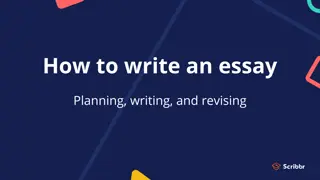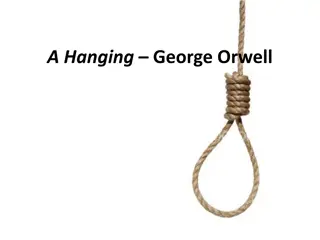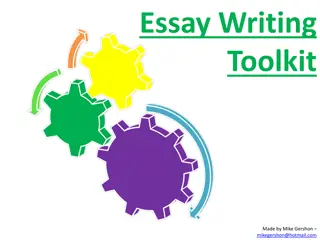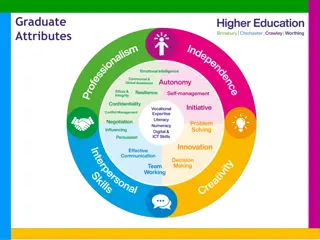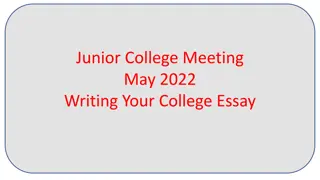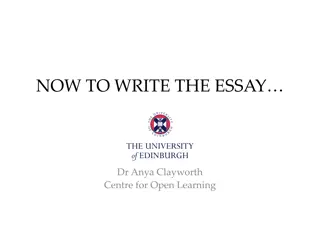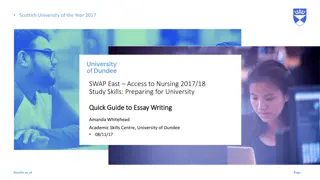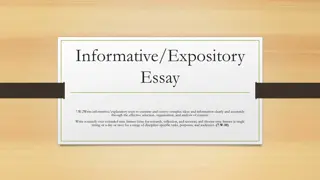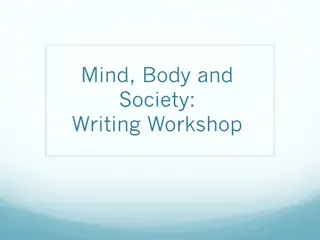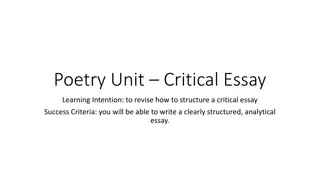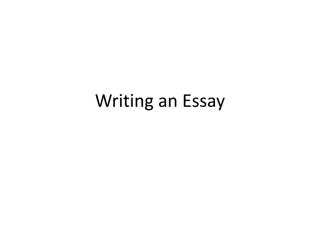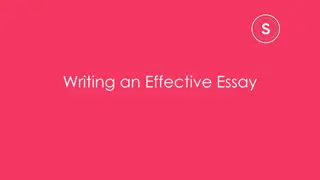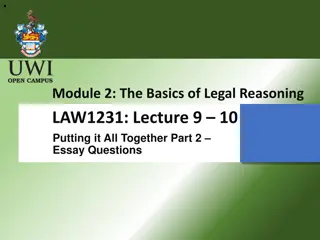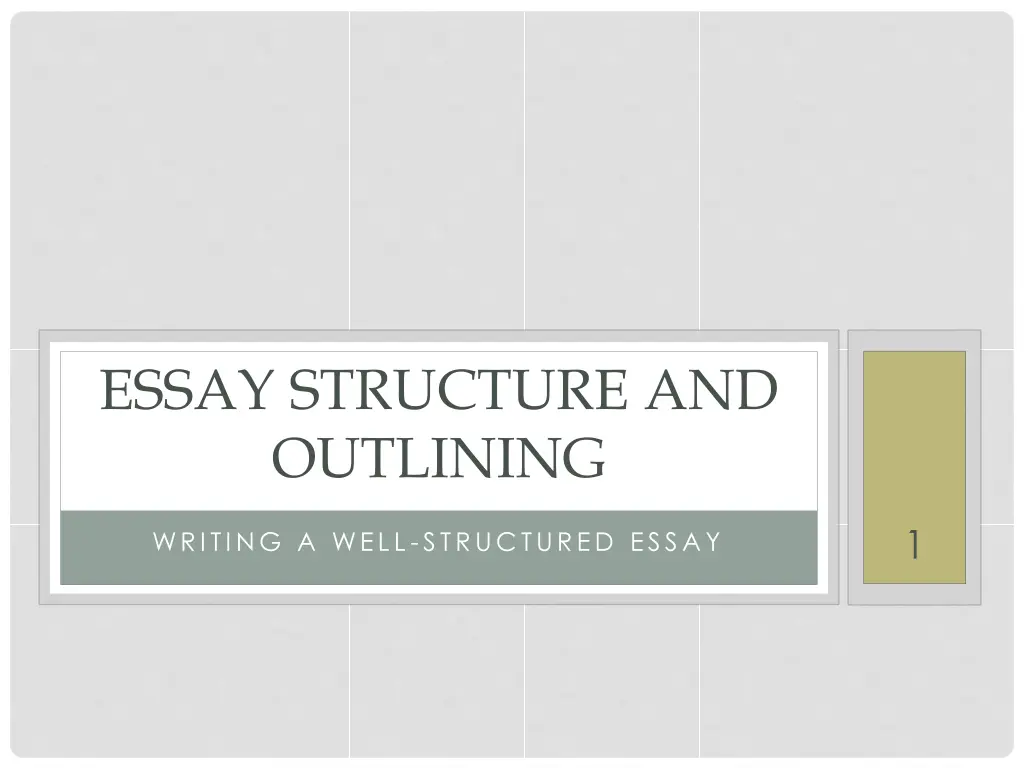
Crafting a Well-Structured Essay: Outlining and Structure Tips
Learn the essential elements of writing a well-structured essay, including outlining, introduction, body, and conclusion. Discover the significance of outlining, creating a roadmap for your argument, and organizing your ideas effectively.
Download Presentation

Please find below an Image/Link to download the presentation.
The content on the website is provided AS IS for your information and personal use only. It may not be sold, licensed, or shared on other websites without obtaining consent from the author. If you encounter any issues during the download, it is possible that the publisher has removed the file from their server.
You are allowed to download the files provided on this website for personal or commercial use, subject to the condition that they are used lawfully. All files are the property of their respective owners.
The content on the website is provided AS IS for your information and personal use only. It may not be sold, licensed, or shared on other websites without obtaining consent from the author.
E N D
Presentation Transcript
ESSAY STRUCTURE AND OUTLINING 1 WRITING A WELL-STRUCTURED ESSAY
PRESENTATION OUTLINE Structure of an Essay Introduction Body Conclusion Definition & Purpose of Outlining Creating an Outline 2
INTRODUCTION Significance of the topic background & context clarity on the purpose of the paper- thesis statement the methods that will be used to support the argument/roadmap of the essay. Remember: Do NOT just repeat the topic/question. You may need to briefly define any key terms in the essay. 3
WRITING A GOOD INTRODUCTION These 3 questions will help you write a good introduction: What is the essay about? What argument(s) will be made? How will the question be answered? 4
BODY Check-list: Develop your argument with the necessary ideas, facts, evidence. Put it in a logical order; what needs to be addressed first, second, last; follow your introduction roadmap. Build the argument with paragraphs that cover one clear idea and help support your main argument. Link the ideas being presented together; tell the reader why you are defining/discussing/explaining the concepts and theories that you are covering. Include counter-arguments: illustrate knowledge of both sides of the argument. 5
CONCLUSION A good conclusion should offer a summary of the findings of the paper, repeating the thesis statement, and include shortcomings that were present in the argument. Avoid bringing up a new idea/concept in your conclusion. Emphasize what you have shown by using phrases like: - Thus it is clear that...... - This essay has illustrated that....... any criticisms or 6
OUTLINES What is an Outline? An outline is the skeleton of a writer s ideas, it is an essay plan. It helps the writer organize their material logically by helping him/her sort and classify the material systematically. 7
WHY SHOULD YOU MAKE AN OUTLINE? It will help you organize your ideas, which makes it much more likely that you will be able to produce a coherent argument. Constructs an ordered overview of your writing. You avoid doing the complex thinking at the same time as trying to find the right words to express your ideas. 8
THE OUTLINING PROCESS A ANALYSE THE QUESTION Essay Question: What are some of the factors that led to the democratic transition in South Africa? 9
THE OUTLINING PROCESS B Brainstorm: The next step is to generate ideas from the course material which is relevant to the topic. Some ideas on where to start: What theories and concepts are relevant in discussing and/or understanding this topic? Who are the main authors (and their arguments on the theme/question)? What do I need to find out to answer this question? 10
MIND MAP 11
THE OUTLINING PROCESS C Choose the ideas most relevant to the question and its central issue. It is impossible to cover everything in an essay, and your markers will be looking for evidence of your ability to choose material and put it in order. You should be able to link each idea to your thesis statement, and clearly explain the link between the point and the essay question. 12
THE OUTLINING PROCESS D Defend There is no right or wrong answer to most questions posed in the social sciences, there are simply good or bad arguments. Support and justify your argument with evidence! 13
THE OUTLINE Introduction The purpose of the essay, context and background, thesis statement, the methods used/roadmap of the essay. Body 1. Domestic political figures a. Key parties and stances i. ANC ii. NP iii. IFP b. Political calculations and decision-making 2. Economic factors a. Decreasing economic productivity and output b. Costs of continued fighting 3. International pressure a. Sanctions and lost prestige b. Democracy/human rights group pressure Conclusion Summary of content discussed in body: how economic and international pressure came to bear on political decision making and the main political actors (must show how this content has supported the thesis statement) 14
This presentation is licenced under the Creative Commons Attribution 2.5 South Africa License. To view a copy of this licence, visit http://creativecommons.org/licenses/by-sa/2.5/za/ Or send a letter to Creative Commons, 171 Second Street, Suite 300, San Francisco, California 94105, USA. 15

